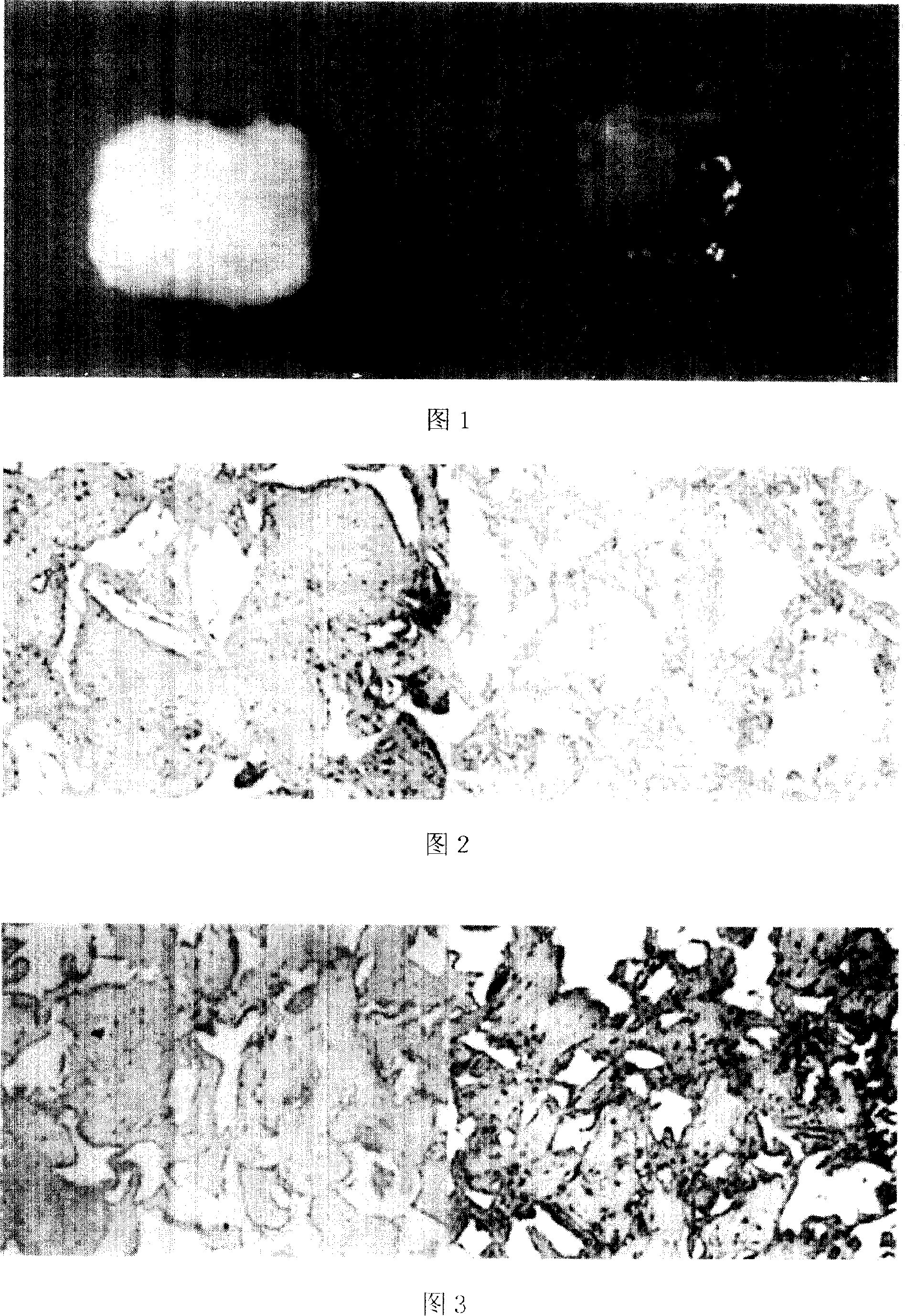Construction for tissue engineering cartilage modified by transforming growth factor beta2 gene
A transforming growth factor and tissue engineering technology, applied in genetic engineering, cells modified by introducing foreign genetic material, tissue culture, etc., can solve the problems of slow metabolism, complicated differentiation and limited sources in in vitro culture, and achieve multiple differentiation potentials , Strong proliferative ability, less trauma to the donor
- Summary
- Abstract
- Description
- Claims
- Application Information
AI Technical Summary
Problems solved by technology
Method used
Image
Examples
Embodiment
[0021] Example, In Vivo Construction of Tissue Engineered Cartilage Modified with Transforming Growth Factor beta2 Gene Based on Adipose-derived Adult Stem Cells
[0022] (1) Isolation, culture and expansion of adipose-derived adult stem cells (human adipose derived adult stem cells, hADSCs): A small amount of subcutaneous fat was collected from a small amount of surgical patients after obtaining consent (the patient was a male, aged 56 years, a patient with old femoral neck fracture , underwent total hip replacement), washed three times with PBS to remove visible blood vessels, washed three times with PBS, cut the fat block as much as possible with scissors, put it in a 50ml centrifuge tube, and added 5 times the volume of 0.1% type I collagenase for shaking digestion After 45 minutes, add DMEM containing 10% FBS to stop the digestion, centrifuge at 1200g for 10 minutes, remove the supernatant and lipid droplets, and filter the obtained cell mass with a filter (100 μm) after s...
PUM
| Property | Measurement | Unit |
|---|---|---|
| pore size | aaaaa | aaaaa |
| porosity | aaaaa | aaaaa |
Abstract
Description
Claims
Application Information
 Login to View More
Login to View More - R&D
- Intellectual Property
- Life Sciences
- Materials
- Tech Scout
- Unparalleled Data Quality
- Higher Quality Content
- 60% Fewer Hallucinations
Browse by: Latest US Patents, China's latest patents, Technical Efficacy Thesaurus, Application Domain, Technology Topic, Popular Technical Reports.
© 2025 PatSnap. All rights reserved.Legal|Privacy policy|Modern Slavery Act Transparency Statement|Sitemap|About US| Contact US: help@patsnap.com

